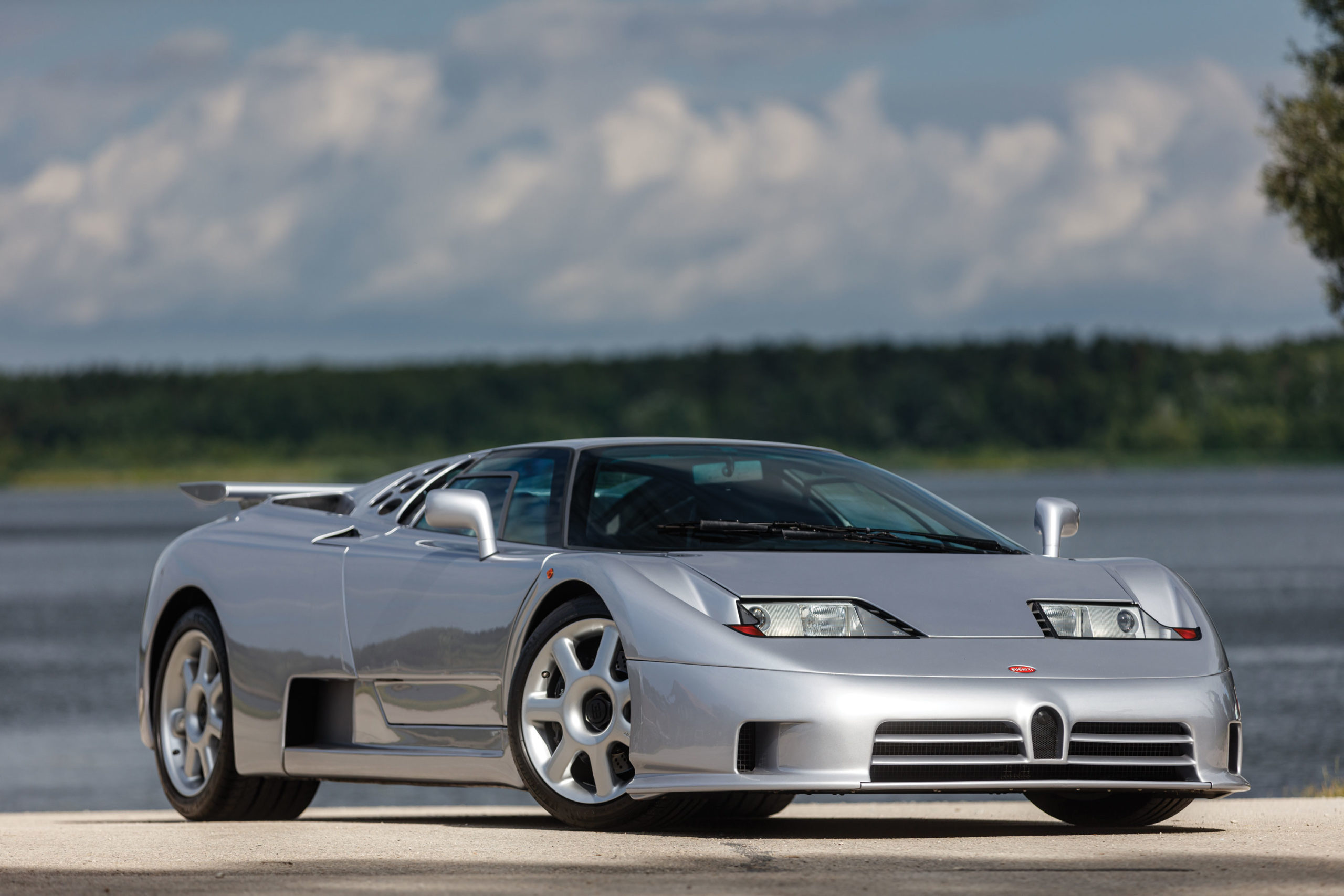Chassis Number: ZA9BB02E0RCD39011
Forty years after Ettore Bugatti’s death in 1947, the once-legendary but moribund marque, one of the most renowned in automotive history, was acquired by ambitious Italian businessman Romano Artioli. His aim was nothing less than a resurrection of Bugatti in the form of a state-of-the-art supercar. Artioli chose Modena, home to Ferrari, Lamborghini and Maserati, as the place to build his modern factory from which the first completed production car rolled out in 1992. Designated “EB110” (signifying its debut 110 years after Ettore’s birth) the first new Bugatti since the 1950s was an advanced mid-engined supercar acclaimed as a worthy successor to its formidable antecedents.
The Bugatti EB110 GT was designed by none other than engineer Paolo Stanzani and stylist Marcello Gandini, co-creators of the exotic Lamborghini Countach supercar to which the EB110, with its short nose, wedge-shaped body and gullwing doors, bore a strong resemblance. Beneath the skin there were similarities too, the short-stroke V12 engine with forward-mounted gearbox having been pioneered on the Countach. The 3.5-liter V12 developed 561 horsepower, good enough for a top speed which placed the EB110 on par with that other “World’s Fastest Car,” the Jaguar XJ 220.
There was also a lightweight version, the even more powerful and expensive EB110 SS (Super Sport), which debuted at the Geneva Salon in 1992, six months after the launch of the EB110 GT in Paris. For the Super Sport, Bugatti boosted power still further to 610 hp. Overall weight was reduced by some 200 kg.
Unfortunately for Artioli, the EB110 was launched just as the early-1990s recession took hold, and the company entered receivership in 1995. About 130 of these exotic cars were built (100 GT and 30 SS).
This EB110 SS was ordered on July 30, 1993, and delivered via German importer Auto König in April 1994 to Dr. Bernd Pöhlmann. A sports-car enthusiast from Bavaria who also owned a McLaren F1, he specified that his EB110 SS should have a more-powerful engine.
Especially for this sale, the Bugatti was dispatched to B.Engineering in Campogalliano for a full service, technical inspection and certification, and at the same time was returned to absolutely original condition. In addition, the car was carefully examined and found to show no signs of any accidents. The car has been serviced by the Bugatti Customer Service Department on three occasions in total (November 2005, February 2014 and July 2021), the odometer reading on the last visit being recorded as 29,995 km.
Finished in Grigio Chiaro Metallizzato (Light Gray Metallic) with dark blue leather interior, it is presented in excellent order throughout and represents a rare opportunity to own and enjoy one of the iconic supercars of the 1990s, the performance of which few cars can match, even today.

